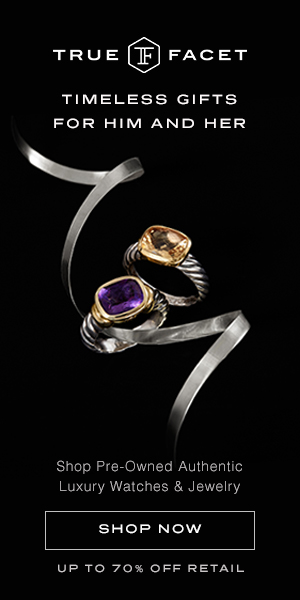How to Start a Vintage Watch Collection
While watch collecting in general is enjoying its heyday, vintage watch collecting is on the rise. Some collectors are fascinated by a watch’s rich history and the greater tradition of watch-making.
Another huge motivator for collecting vintage watches is simply economics. Modern watches typically depreciate significantly and quickly. However, most vintage watches will actually appreciate in cost; therefore, some collectors consider vintage watches to be a savvier investment.
Ready to build your own vintage watch collection? Here’s how to get started:
1. Do not confuse vintage with antique.
Until the mid-1970s, most watches were resold privately at estate sales or through local jewelers. However, in 1974, an Italian watchmaker and restorer, Osvaldo Patrizzi, founded his own auction house exclusively for watches and clocks. Soon after, large auction houses like Sotheby’s and Christies followed suit and began hosting auctions dedicated to watches alone.
Therefore, it’s surprising to some new collectors that vintage watches are classified as any watch over 20 years old—which, given the centuries-old history of watch-making, is not that long ago.
2. Set your sights on a specific model.
Because a lot of research is required for vintage watch collecting, we suggest focusing on a single model to delve deeply into. You’ll want to read up on the watch’s significance in the watch industry and its historical context—especially for watches that were originally built as time-keeping tools for the army, divers, and outdoorsmen.
Furthermore, within a particular model’s history, there may have been updates or inconspicuous changes to the watch’s design or production that will significantly sway its resale value. In order to be a shrewd collector, you need to be acutely aware of these different periods.
Not sure where to start? Some popular models for vintage watch collectors include the following from the mid-1960s and 70s:
 Breitling Navitimer World Chronograph
Breitling Navitimer World Chronograph
Introduced in 1952, the Breitling Navitimer World Chronograph was designed for pilots and crews to make in-flight calculations like airspeed and rate of descent.
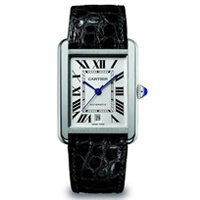 Cartier Tank
Cartier Tank
The Cartier Tank watch dates back to 1918 and was a pivotal moment in watch-making history. The Tank watch is the first watch to be designed with a holistic, style-first approach.
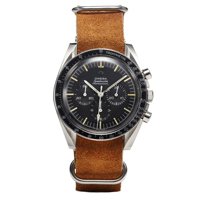
Photo by Worlds Best Ever
Omega Speedmaster
The Omega Speedmaster is best known as the “First Watch on the Moon” when astronaut Buzz Aldrin wore his Omega Speedmaster during the Apollo 11 mission.
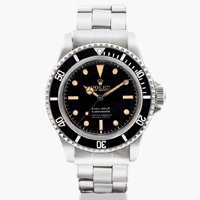
Photo by Christies
Rolex Submariner
The watch worn by James Bond and a veritable icon, the Rolex Submariner is a quintessential part of any watch collection, particularly a vintage model.
3. Research the original design extensively.
In addition to knowing the watch model’s history, you should know the original design—inside and out—incredibly well. And that’s not just for bragging rights; it’s to protect your investment.
A thorough knowledge of the watch’s original parts will help you recognize any parts that may have been repaired or replaced. Any replacement parts (particularly if they’re modern or after-market pieces) will significantly decrease a watch’s value. Credible sellers will always disclose this information in their listing. However, unscrupulous sellers may not be as direct and prey on less-informed shoppers. Safeguard yourself from being duped by recognizing which bezel, hands, logo, and metal-type were specifically used on your watch’s model for that specific era.
4. Inspect the vintage watch’s condition.
The overall condition of your vintage watch can greatly sway its cost. Most collectors prefer a watch with a little wear-and-tear that signals a watch has real history and hasn’t been laying in a safety deposit box its entire life. Moreover, a damaged but all-original watch is preferred over one that was restored (see above). In fact, some of these signs of deterioration actually sky-rocket the value of the watch:
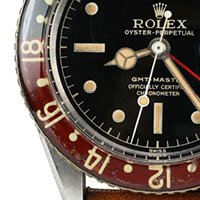 Damaged Bakelite Bezel
Damaged Bakelite Bezel
Early watches were issued with a plastic Bakelite bezel. However, because Bakelite is brittle and prone to cracking, wearers would frequently replace fractured bezels with metal versions. Therefore, Bakelite bezels are rare and appreciated by collectors, even if the bezel is cracked or faded.
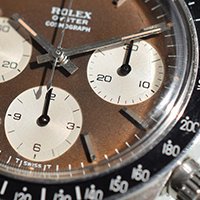 Tropical Dial
Tropical Dial
When a formerly mirrored black dial is exposed to the sun, it fades into a dull brown. (Similarly aged gilt dials turn into a warm caramel color). This “tropical dial” is hotly coveted by collectors as it adds to the watch’s backstory. The key, however, is to find a tropical dial that is evenly faded across the dial.
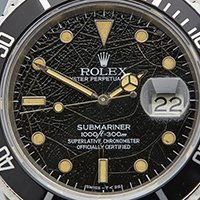 Crazed Dial
Crazed Dial
When a dial’s defective lacquer cracks, it creates a spider web effect (known as a “crazed dial”) across the dial. However, collectors debate whether or not this adds any value to the actual watch while some simply prefer the overall look.
Damaged Crystal
A scratched or replaced watch crystal (the glass that goes over the dial) does not impact the cost of a watch. However, if you see a significantly marked up crystal, be sure to confirm the dial underneath is not damaged.
4. Join the conversation.
Unfortunately, it’s very common to shell out big bucks for what turns out to be a “frankenwatch,” a vintage watch that is cobbled together with different era components and therefore worth significantly less than the original. Therefore, you want to vet out any shady sellers.
To that end, join web forums and connect with other watch collectors. They may have recommendations for reliable sellers, notes on what to look for with your particular desired watch and cautionary tales from past experiences of their own. And, once you are ready to buy, you can tap into your network of watch experts to weigh in before you purchase.





